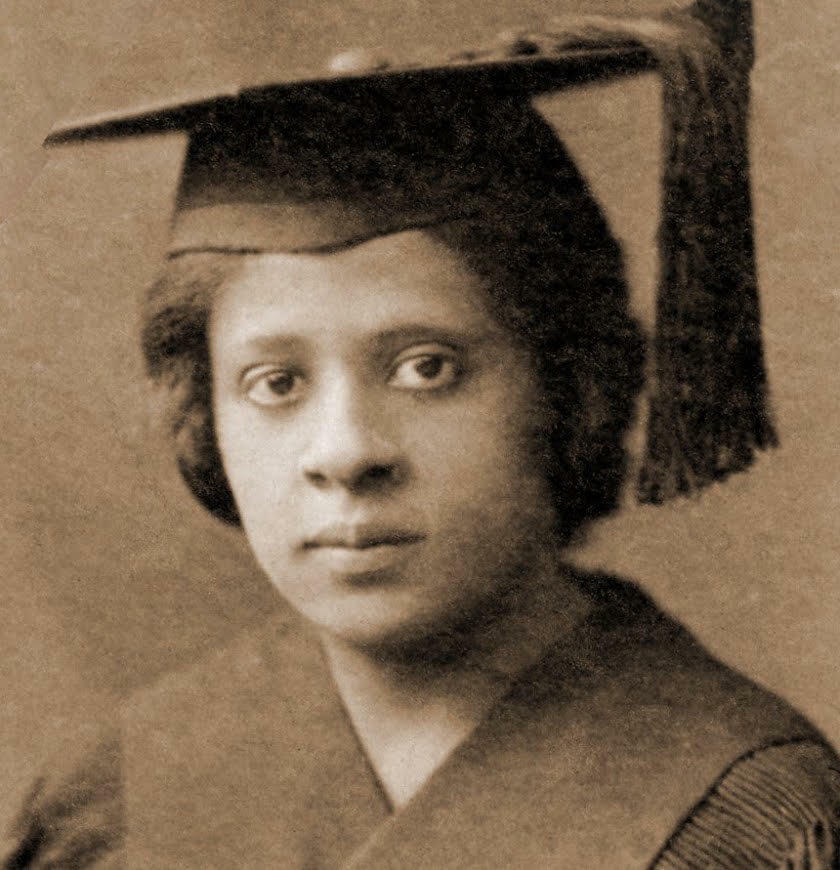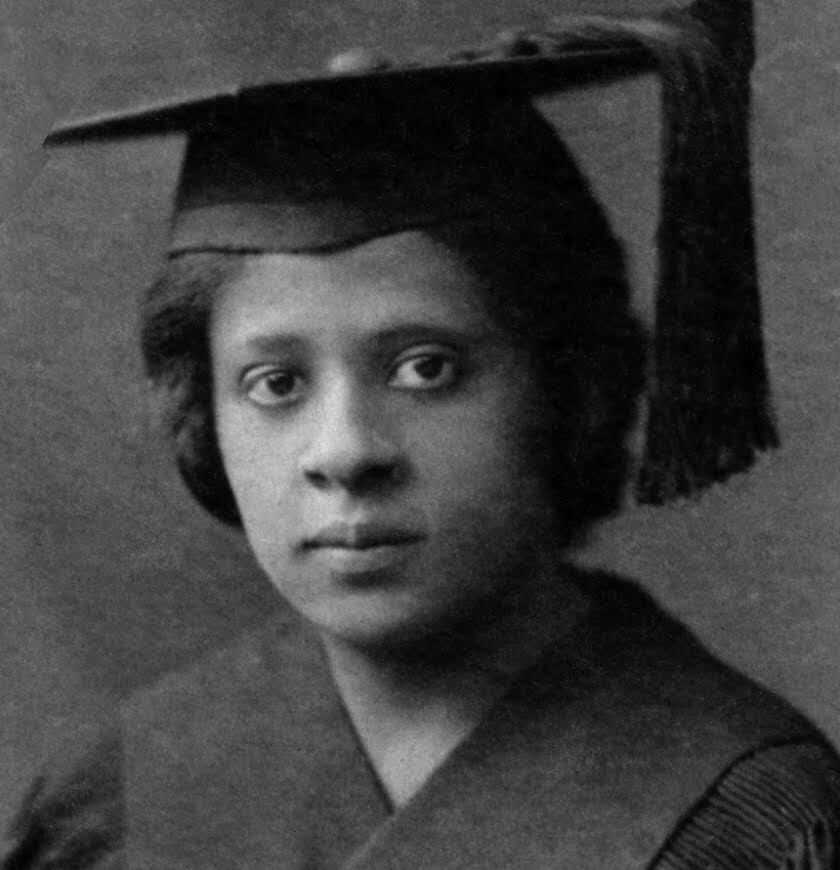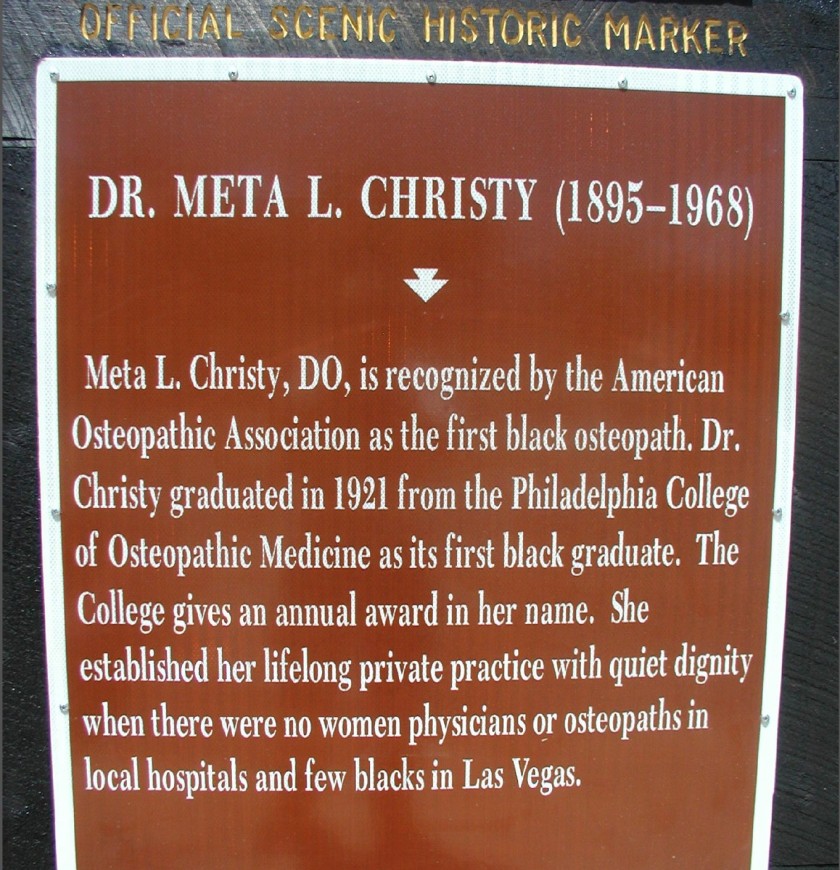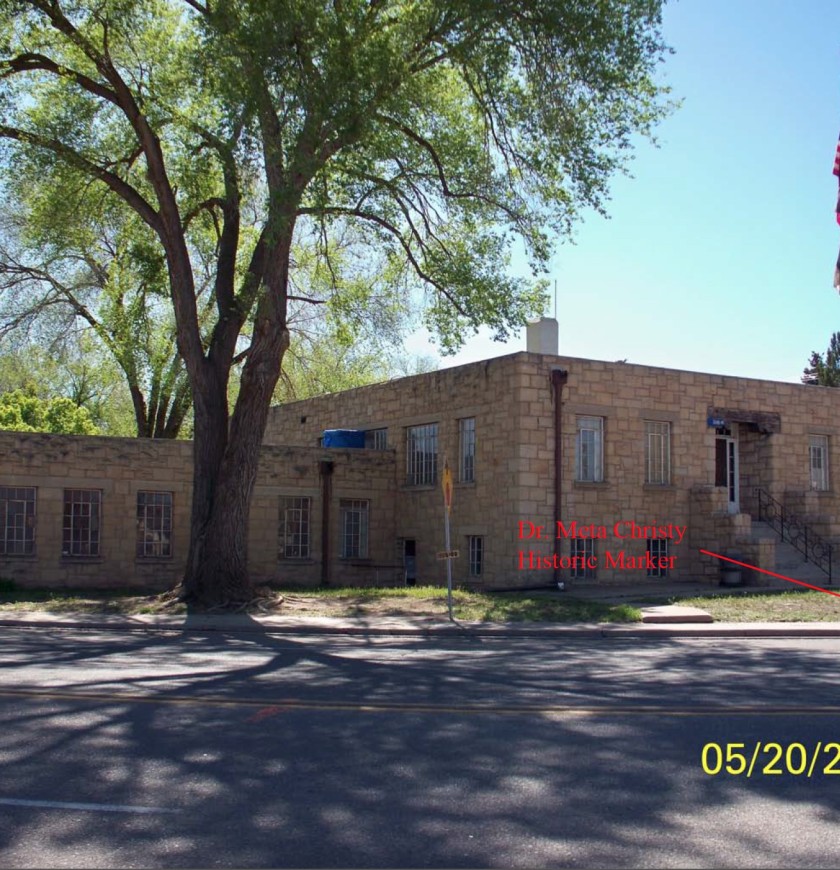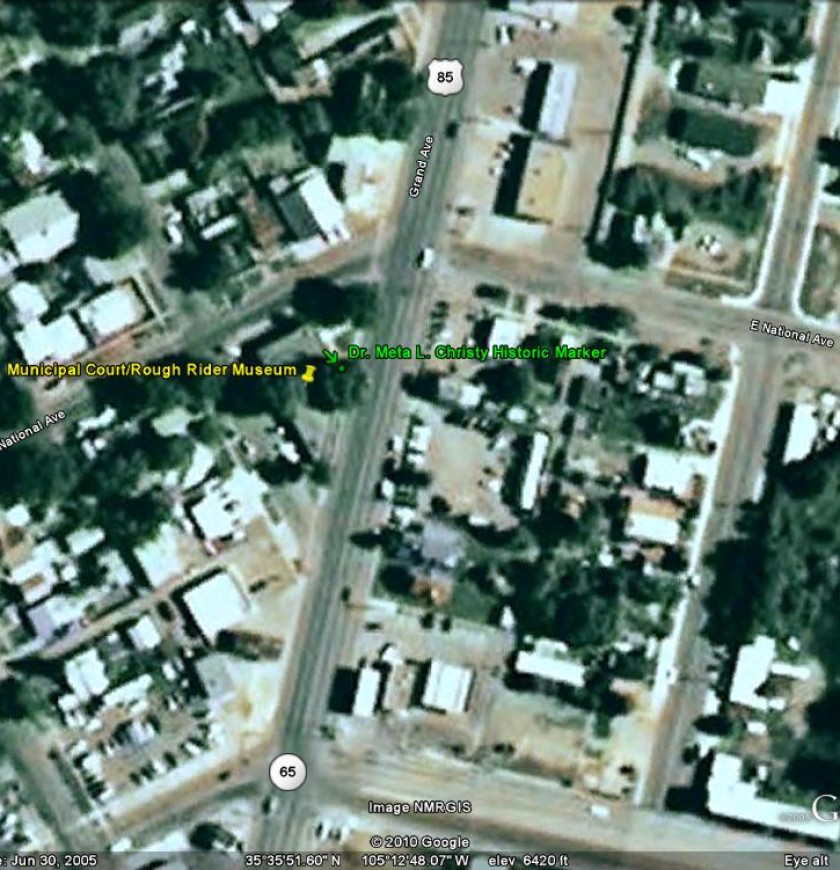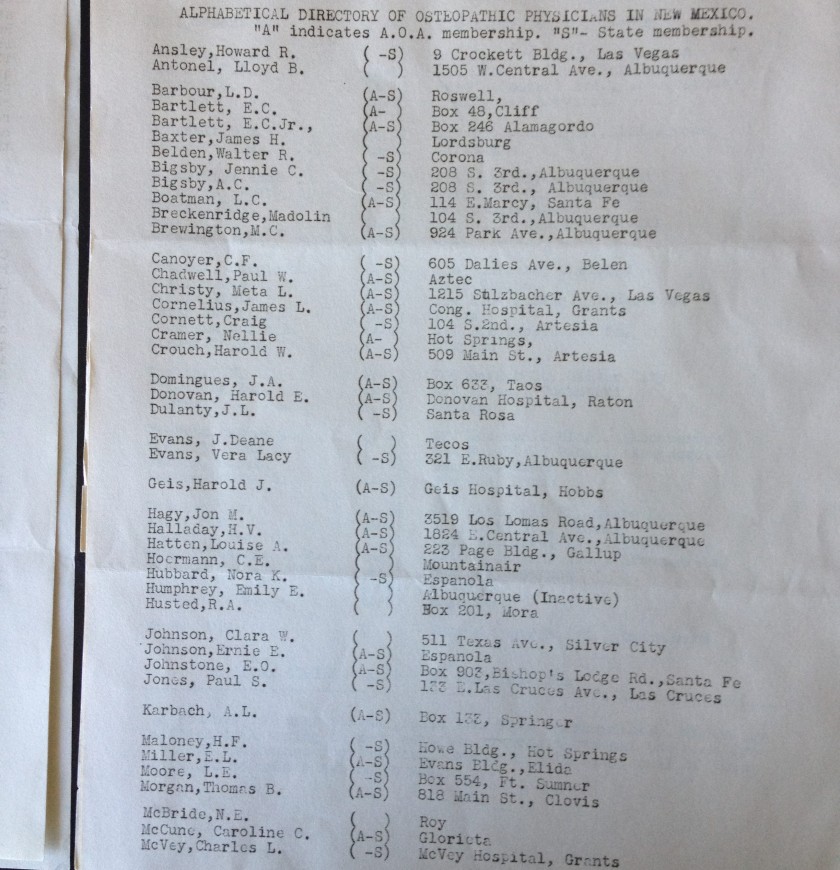Dr. Meta L. Christy
The American Osteopathic Association recognizes Dr. Christy as the first Black osteopath in the United States, while Duke University calls her the first Black osteopath in the world. She served her community with distinction, grace, and warmth, and is remembered fondly for her kindness.
Dr. Meta Loretta Christy broke many barriers for her race and gender. She was the first black graduate of the Philadelphia College of Osteopathy, the first black osteopath in the United States, and one of the first osteopaths in the world, perhaps the first. One of very few black people in her town of Las Vegas, New Mexico, she became a homeowner and created a clinic on her property, taking care of people in her community, often at no charge, and providing a place for up to ten at a time to stay during recovery from treatments. She was generous with her skills and time and known as “second mom” to everyone in her neighborhood.
Meta Loretta Christy was born in Indiana in October of 1895. Her name first appears in the 1900 census of Kokomo, Howard County, Indiana, which also records her age as four years old. Her mother was Arminda Stewart Christy, a dressmaker who gave birth to six children, three of whom were alive in 1900. Her father was John Franklin Christy, a schoolteacher and later an attorney. In 1907, Meta and her relatives were listed on the Cherokee rolls as having applied for membership in the Cherokee Nation; they were turned down. She is listed in the book Cherokee by Blood as residing in the household of Silas Shoecroft, who was listed as Cherokee. The 1900 census shows the Shoecrofts living in Muncie, Indiana, and the occupants of their house as African Americans.
In 1921, Dr. Christy graduated from the Philadelphia College of Osteopathy, becoming the first black graduate from the college. A 1921 photo shows her as the only black student in her class of 21 graduates. Since 1995, The Student National Medical Association of the Philadelphia College of Osteopathic Medicine has given their top honor, “The Meta L. Christy Award,” in recognition of exemplary practice of osteopathic medicine: service to the community and inspiration to future doctors of osteopathic medicine.
After college, Meta moved to Las Vegas, New Mexico, where her brother Laroy Oran Christy lived until he left for Riverside, California, as noted on the 1930 census. With the advent of the railroad in 1880, Las Vegas quickly became a boomtown. It had distinct geographic districts in the first half of the 20th century: the Hispanic population lived in Old Town, the Anglo mercantile population in New Town, and the small black community along the railroad. Dr. Christy lived at 1215 Sulzbacher Avenue, near the railroad.
Dr. Christy appears in the 1930 Federal Census as living in Las Vegas City, San Miguel County, and as “head of household, house rented, female, Negro, 28 years old, single, place of birth—Indiana, place of birth of father and mother—Indiana, occupation–osteopath, general practice.” In the 1939 Las Vegas city directory, she is listed as Osteopathic Surgeon; in the 1947 city directory, she is listed with the additional information “homeowner.”
Dr. Christy was considered a “second mom to the whole neighborhood” according to Mario Vasquez, who grew up across the street from her. According to Vasquez, she would take the neighborhood children on picnics, give them ice cream, and trade comic books. He recalls that she had a china doll collection. His sister, Annette Ortega, was taken in by Dr. Christy as a teenager in the early 1960s. She remembers her as “the most wonderful woman,” who took care of the sick in her community and never charged them a fee. She had a guesthouse made of stone as well as an herb garden on the property. Together, the three buildings served as a clinic, and Dr. Christy often housed up to 10 patients at a time during their convalescence.
Dr. Louise Taichert, who was a patient of Dr. Christy’s when she was around 17, described her as “lovely, very refined.” At the time, Dr. Christy lived with a gentleman who worked as a Pullman porter on the trains, and they were the only two black people in town. They likely married eventually, and her husband predeceased her, though the date is unknown. Until the railroad left Las Vegas in the 1950s, other black people settled in the city, but many left with the railroad.
Other prominent Las Vegas citizens also remember Dr. Christy. Jesus Lopez—“Mama Lucy’s” son and a local attorney who hosts a radio show about Las Vegas history—recalls Dr. Christy driving a classic large black car in the late 1950s accompanied by her stylish friend, Mildred Eastmen. “Both women were dressed to the nines,” remembers Lopez. He was also her patient and said she healed him.
Editha Bartley, a well-known Las Vegas writer, recalled her father speaking of Dr. Christy with great respect. Her father, Dr. Carl Gellenthein, referred patients to Dr. Christy for follow-up house calls. Osteopaths were not allowed to practice in the local hospital.
In 1950, Dr. Christy became a member of the congregation of the Presbyterian Church of Las Vegas. Mildred Sperry, Gretchen Bush, and Ainida Baker each remembered her as a “nicely dressed, quiet lady” who attended church by herself.
Dr. Christy was buried at the Masonic Cemetery in Las Vegas in 1968. There is no headstone on her plot in section R, row 8. Prominent doctors from Las Vegas to Albuquerque attended her funeral. Additional honors bestowed upon her in her lifetime included the Distinguished Service Award from the New Mexico Osteopathic Association in 1956. Before her death, according to her obituary, Governor David Cargo had appointed her to The Health Fact Finding Commission.
The American Osteopathic Association recognizes Dr. Christy as the first black Osteopath in the United States. Duke University calls Dr. Christy the first black osteopath in the world.
Additional Information and Clarification
While some reports indicate that Dr. Christy’s parents were slaves, according to research provided through Ancestry.com, “Her family were actually Free-African Americans as early as 1820, when they settled in Salem, Washington County, Indiana. They prospered there until the 1860s when attitudes toward blacks changed dramatically and all left the county.” Ancestry.com also noted, “Her cousin Emma Christy Baker was the first Black policewoman in Indianapolis, Indiana, 1918. Their Uncle Levi Christy operated an African-American newspaper, The World, in Indianapolis.”
Annette Ortega remembers Dr. Christy saying that people outside of family members had paid her tuition. In 1930 Meta would have been 35. This was an error in the 1930 census. Until this synopsis, the most information in one account on this distinguished woman was a two-paragraph obituary.
Sources:
Wood, Betty. 101 Men and Women of New Mexico.
Cox, W and B.J. Richardson. Noteworthy Black Women of New Mexico.
Motto, Sytha. More than Conquerors: Makers of History, 1528–1978. Albuquerque: Adobe Press, 1980.
Poldervaart, Arie. “The New Mexico Law Library—A History,” New Mexico Historical Review, January 1946, pp. 47–59.
Internet sources
“Minorities in Medicine” The DO 2009, BlackNews.com “Black History Month: The State of Black Health”
Believe in NM Girls: Celebrate Women’s History Month
Directions:
Dr. Meta L. Christy
San Miguel County
Community leader | Healer |
Statehood (1912 - present) | Territorial Period (1848 - 1912) |
Northeast



